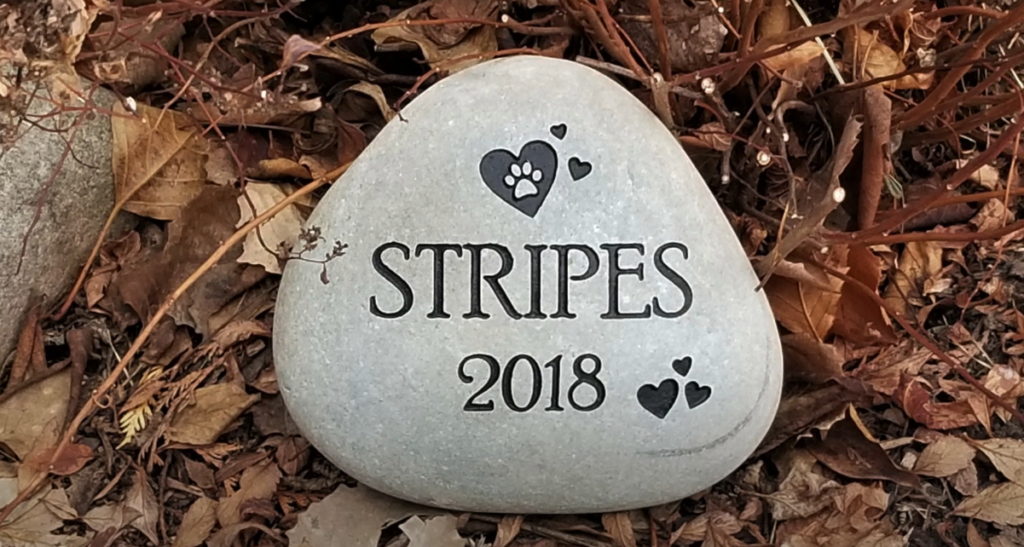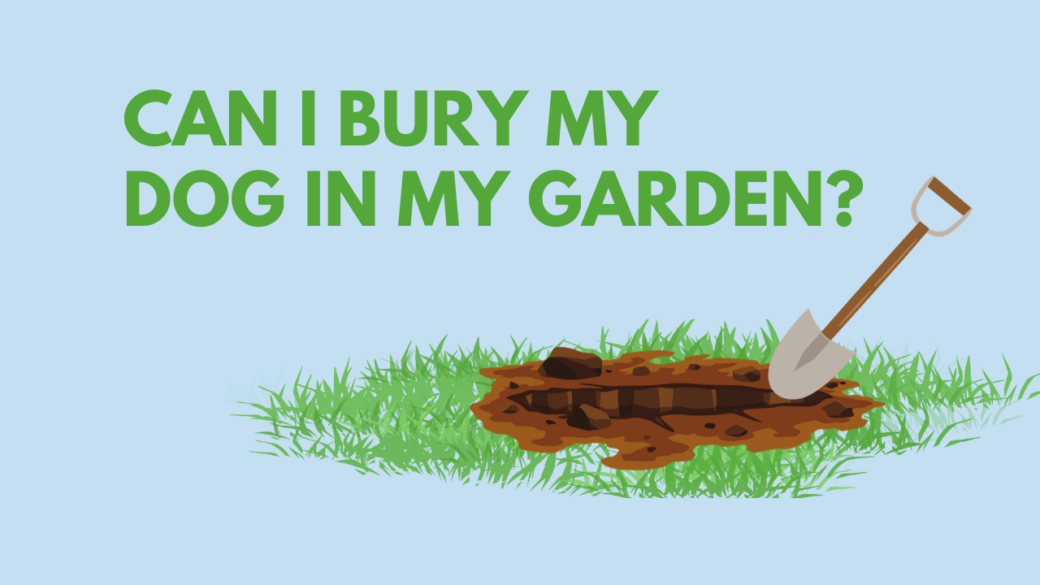The death of a beloved pet is one of the toughest aspects of pet ownership, whether they died at home or were put to sleep at the vet’s clinic. It almost seems unfair, how short their lives are compared to people. And it’s like losing a family member or best friend.
So, it’s understandable why some people would prefer to keep their dog close to home, even in death. Comfort can be taken knowing that their burial site can be kept tidy and visited often, which are some of the reasons why people choose to bury their dogs at home.
But the question is – can you legally bury animals in your garden?
Yes, it is legal to bury your dog in your garden. However, to do so, you must own and live on the property where the dog will be buried; the dog cannot be buried in a public area. In some cases, such as if the dog has been euthanised or undergone chemotherapy, a vet will not release the dog’s remains for a home burial.
Table of Contents
What are the Laws on Burying Dogs at Home in the UK?
It is perfectly legal to bury your pet at home as long as a few rules are followed:
- You own the grounds where your pet will be buried and it is a domestic property, not a business.
- Your pet must have lived on this property. If your home does not have a garden, you cannot bury your pet in a public place, such as a local park, or at a friend’s house.
- The grave should be at least three feet deep in heavy soils and at least two feet in lighter soils.
- Your pet isn’t hazardous to human health.
In the Animal Burials: Prevent Groundwater Pollution guidance available on gov.uk, it is stated that there are “no minimum good practice groundwater protection requirements” for domestic pets. However, a dog must not be buried near a water source, such as ponds, rivers, or wells.
Although it is a rare occurrence, sometimes a vet will refuse to release a pet’s remains for home burial. This is due to the remains being potentially hazardous to human health; for example, if the dog has undergone chemotherapy or has been euthanised, then certain controlled drugs used during these procedures could be dangerous to wildlife. If this is the case, ask the vet for a written explanation of why your dog cannot be brought home.
What is the Best Way to Bury a Dog at Home?
Now you know the answer to “can I bury my dog in my garden?”, it is time to prepare. Although there is no “best way” to bury your dog at home, there are some aspects that can make this upsetting time a little easier.
Take Some Time
There is no need to rush this process. It is easy to forget that you don’t have to bury your dog immediately; in some cases, a quick burial might not be possible. Give yourself time to grieve and make sure that you are comfortable with the decision to bury your dog at home.
After a dog dies, the body can be kept for a couple of days in cool storage, preferably kept below four degrees Celsius. This should be plenty of time to plan your pet’s departure and let your family say goodbye. The time a body can be kept safely differs by breed, though; some larger breeds, like a few included in this list, are best to be buried quickly before rigor mortis sets in.
If you wish to do this, ensure the body is correctly wrapped in waterproof material; body fluids and gas can still be passed after death.
Allow Others to Say Goodbye
If you have chosen to bury your pet at home, it is important to allow other members of the family to say their goodbyes. Even if the burial is private, people can still pay their respects. Your dog will have made a massive impact on your life as well as on others.
Small children might not understand their family pet has died, but it will still benefit them to say goodbye. Even if they don’t fully comprehend, they will understand that something important has happened.
If you own other pets, it might also be a good idea to show them their deceased friend. Some animals will take a few sniffs while others show no outward signs of recognition, but this can help them understand what has happened. Without doing this, you might find your other pet showing distress, like whining or pacing, because they do not know where your dog has gone.
Pick the Perfect Resting Place
Did your dog have a favourite place in the garden? Somewhere they’d lie in the sun or play? If so, this might be a good dedicated spot for their gravesite and memorial. Choose a spot that is both meaningful to you and also away from any footpaths or areas where people usually gather.
Depending on the land your house is on, you might also need to check for underground pipes or water lines before choosing where to bury your dog.
Once you have settled on a location, grave preparation will take place. The ground should be dug to a depth of at least two or three feet, depending on the soil condition. You must also ensure the grave is wide enough to accommodate your pet’s size.
Of course, once your dog is buried, you may wish to mark the spot with a memorial stone or plaque. You can plant dog-safe flowers surrounding the area in their memory or decorate it in whatever way you wish to memorialise their life. Some dog owners choose to keep certain items, like collars or food bowls, too.

Look After Your Dog’s Body
To bury your pet at home safely, you must also ensure their body is in good condition and treated with respect. Many pet owners choose to wrap their dogs in a blanket or cloth before carrying them to their gravesite or place them in a pet casket for burial.
Pet caskets can be bought from a local pet cemetery. A biodegradable container might be better suited if you are more environmentally conscious.
After placing your dog’s body in the grave or casket, you might want to add in a few of their favourite toys. This is a nice way of ensuring they’ll have fun after passing over the rainbow bridge.
Ensure the Grave is Safe
Unfortunately, scavenging animals can be an issue in some areas and they can scent out a buried dead dog. They might dig up the resting place of your beloved companion.
To avoid wild animals disrupting the grave, you can lay something heavy over the grave, like paving slabs or a plant pot. It might also be possible to place a fence around the grave to keep it safe and private.
Are There Options Other Than Burial?
If you had your heart set on burying your dog at home, only to find out it isn’t an option for you, then cremation might be a better choice. In many cases, the veterinary surgery will store deceased pets – dogs, cats, etc. – in cool storage until they can be collected by the pet crematorium.
Your dog can either be cremated individually, which allows the owners to have the ashes returned, or with other pet animals. In the case of cremation with other animals, the ashes are sometimes spread in a registered pet cemetery.
If cremation sounds like the preferable option, then you can contact your vet to discuss this further.
To Sum Up
No matter what you choose to do, the passing of a pet is difficult. There are no right or wrong decisions. What’s important is taking the time to decide what is best for you, your family, and your dog’s memory.
If you have ever wondered if you can bury your dog in your garden, then hopefully, this post has offered the knowledge and advice needed.

